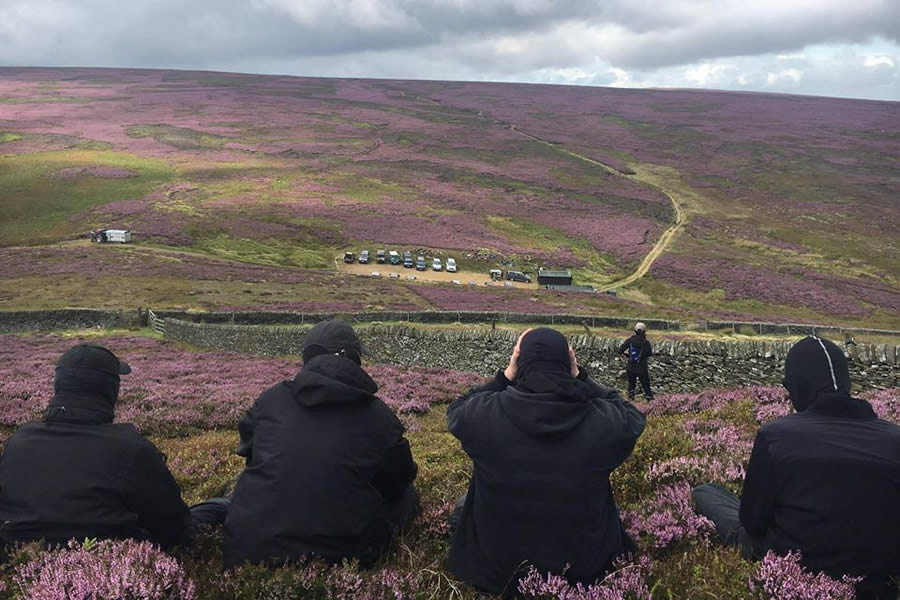
Grouse and Pheasant Shooting and How To Sab Them
Season : August 12th - 10th December
Grouse are smaller than pheasant and larger than partridge
which they resemble. They are found in coveys, large and small, sometimes
singly, sometimes of 20 birds or more. Later in the season they often
pack in large numbers.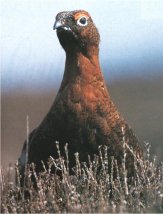 They
feed mostly on heather shoots, occupying bleak moorland. They are very
hardy birds living in cold conditions, breeding and maturing early.
They take to their wings within a week of hatching and in spite of
endemic disease on most moors, they are one of the strongest flying
birds.
They
feed mostly on heather shoots, occupying bleak moorland. They are very
hardy birds living in cold conditions, breeding and maturing early.
They take to their wings within a week of hatching and in spite of
endemic disease on most moors, they are one of the strongest flying
birds.
Although not in the strictest sense of the word artificially reared, the moors are keepered and the grouse population kept artificially high e.g. the heather is burned to encourage the growth of new shoots, every form of winged and four legged predator is rigidly exterminated etc. If left alone the population would stabilise at a much lower figure and natural immunity to endemic disease develop in most cases.
Birds are shot in two ways; walking-up or driving shooting. Walking-up entails the guns walking in a line across the moor, with the wind, sometimes with a variety of gundogs to disturb concealed birds, shooting as they take off. This method is employed mainly in the later part of the season when the numbers have been depleted by driven shooting or on moors where grouse are in short supply anyway.
Shooting driven birds is the traditional form of grouse shooting. Grouse are driven by along line of beaters over the waiting guns, concealed behind shooting butts. The drive can cover miles of moorland and often be out of sight until within reach of the shooting butts.
WHERE ARE GROUSE SHOOTS ADVERTISED?
a) On the roadside. Notice boards at the beginning of footpaths or public tracks leading onto a grouse moor. They will tell you when the moor is closed for shooting.
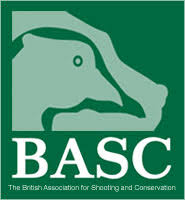 b)
National Park Planning Boards will supply on request a list of dates
when moors will be closed for shooting along with a photocopied map
showing moor boundaries. They have negotiated access agreements with
shoot owners in the area, that allow the public onto the moors at certain
dates, providing that the moors are allowed to close on certain days
for shooting.
b)
National Park Planning Boards will supply on request a list of dates
when moors will be closed for shooting along with a photocopied map
showing moor boundaries. They have negotiated access agreements with
shoot owners in the area, that allow the public onto the moors at certain
dates, providing that the moors are allowed to close on certain days
for shooting.
c) In some local newspapers, under the public notices column, they will list moors, that are accessible to the public, and when they will be closed.
d) Some County Councils have negotiated public access agreements with the owners of grouse moors and it becomes their task to inform the public that these moors will be closed. These county councils will keep lists of such moors and when they are closed.
e) It should be remembered here that most grouse are huge, private, fenced-off tracts of land where no member of the public is ever allowed. You will have great difficulty in finding shoot dates for these moors, because the owners are under no obligation to warn the public and publicise the dates. It should also be pointed out that those moors which have had access agreements negotiated with them and allow public on, have to fix days of shooting well in advance of the 12th August. Once decided on, the dates cannot be changed - so if one shoot is disrupted by sabs, they cannot hold another to make up for lost sport. Unfortunately, these shoot dates are never available until the first week of August.
MATERIALS TO TAKE WITH YOU
1. Whistles, footballs, horns, air-horns..
2. Large white rags, flags or old sheets. Old fertiliser bags will do for beating purposes.
3. O.S. maps of the area. All groups should be given details maps of the shoot, but try and bring the relevant O.S. map.
4. Phones or walkie talkies, cameras, video cameras and binoculars are essential.
5. Compass. Do not under estimate how easy it is to get lost on these open moors. Someone in the group should be able to use one.
6. Silver foil arm bands, shiny metal badges, metal tin lids etc: all reflective shiny surfaces for i) reflecting light into the eyes of shooters to disrupt their aim and ii) materials that will reflect light and warn grouse of impending danger at the butts. Hand mirrors would also be useful.
DRESS
Wear white/yellow/light colours that will assist in clearing the grouse whilst pre-beating and make you stand out when in the shooting butts. Otherwise try and look like a hiker as it may provide you with a cover story on the moors. Strong sensible footwear is a must for high, often boggy rocky slopes. Also of course clothing that can protect you from the elements is a must. Fog, rain and winds are a common feature of the Pennines and Dales. Lastly don't forget, grouse are colour-blind; so a colour like red is not as effective as used to be thought.
PLANNING A GROUSE SHOOT SAB
Because regional or joint hits are needed to sab a shoot effectively, the organising groups really need to explore the shoot moors and it is vital that someone knows their way around the moor. A good sab is really dependant on the planning that has led up to it. The following points have to be known:-
a) How far does the shoot boundary extend - they cannot shoot willy-nilly over the nearest 100 miles of moorland. The moor is divided up into say 5 or 6 shoots and shooting your neighbour's grouse just is not cricket.
b) You need to know all access points onto the moor. How far can you get a Landrover up the track? Most of the access to the butts will be little better than dirt tracks. Remember also, grouse shooters are often sickly creatures and hate walking uphill. Nine times out of ten there should be some means of getting a Landrover up to the butts.
c) Lines of shooting butts are marked on the 2 1/2" scale maps as are shoot boxes. All these lines have to be marked onto the O.S. map; there could be as many as six lines of 12 butts. Once they are marked it is possible to determine which stretches of moor belong to which line of butts i.e. what particular stretch of moor is beaten for each butt line. Once all the facts are marked on the map, you can determine the direction the beat-line will take, the size of moor you have to beat for each line of butts and indeed even the line of butts that will be used. Ensure all butts have been checked and correspond to those marked on the map. Also some may be 'double butts'; can be shot form the front and the back and used for two beats.
With this information in hand, obviously moving across the moors and directing sabs becomes a lot easier.
TACTICS BEFORE THE SHOOT STARTS
1. Pre-beating is the most effective method, and it should be done:-
a) With the wind - no bird wants to fly into the wind.
b) Away from the line of shooting butts that are to be used first and indeed beyond the point that shoot beaters will start their beating.
c) If possible downhill; it is a lot easier to force birds to move in this direction.
The sab beat line should be longer than the line of butts. Do not forget also that the beat line will have to widen out as it progresses away from the butts to encompass the whole area the shooters will beat. To do this effectively 50-100 sabs are needed really. Gaps of 20-30 feet are needed between sabs and generally most of the rules for pre-beating hare-coursing apply to grouse moors. White flags and noise seem to shift grouse best although noise should be controlled. Grouse beating (official) usually starts around 9.30 am so sabs need to START at around 8.00 am at the latest. The use of CB's will assist in controlling the line. Please remember these attempts are not races. The line should move at the pace of the slowest person and should be kept STRAIGHT.
TACTICS AFTER THE SHOOT HAS STARTED (DRIVEN)
Depending on how many sabs there are and how well the pre-beating has gone there are a number of options open.
1. As in hare coursing, counter-beating or flank beating can take place. However this should not merely be an opposing line of sabs parallel to grouse beaters. The aim is to move or funnel grouse in a particular direction. Taking into account wind, land gradient and position of shoot butts, a line of around 45 degrees to grouse beaters and shoot butts should be formed. This should be as tight as possible - as birds approach and are turned down the sab line, so the noise should progress down the line. If the whole sab line is a block of noise all the time, not only will you simply turn the grouse back but you will wear your voice out. So the grouse have to be funnelled away from both shoot butts and beaters. Controlled noise and constant attention are required for counter-beating to work as it should.
2. As the grouse beaters advance on butts and sabs so the counter-beat line will have to slowly retreat, as beaters meet the front end of the sabs line, so these sabs should move down the line. Alternatively, they should fall back to the butts and block the line of fire of the shooters.
3. If it proves impossible to form a static counter-beat line at an angle than a line of sabs should be placed approximately 200 metres out from the butts. This line should be very tight and noisy; the object being not to turn the birds back into the beaters but to make them rise up into the air, out of range (50 metres) of the guns. This however is a somewhat dodgy tactic, the best means of defense of the grouse is low flight hugging the hill gradients. By forcing them up higher, they are denied this natural defence. Sabs have to ensure birds DO fly high and must watch that shooters do not shoot behind their butts after the birds have flown over and started to descend.
4. The 'ultimate' tactic is to occupy butts and block the line of fire at both the front and the rear of the butt. The shooting butt is usually made of natural materials i.e. timber, turf, stone and is usually shoulder height. Its prime task is to provide camouflage for the gun-wielder, hence their tweedy attire. Clearly then no shooter is going to want white sheets, banners, piles of non camouflaged bodies, lots of silvery reflective items, screams and shouts etc., as it just might ruin his camouflage cover. By standing in front and on top of the butt it becomes more difficult to shoot accurately. Sometimes shooters will put away their guns when sabs resort to this tactic, others will attempt to carry on; groups must be prepared to assist areas that persist in shooting around sabs. Good communications and quick thinking should take care of most trouble spots. This tactic is not as stupid as it may sound. The majority of shooters will not shoot in close proximity to people, and indeed the BFSS official line on such confrontation is to advise shooters to put away their guns immediately, and in fact to lock it in a secure vehicle (well you can never be too sure these days, with crime as high as it is!). If shooters persist in shooting past you, bring up the fact that the shooter is refusing to toe the accepted line of the god-like BFSS. You never know, it might work!
5. During the day, guns and beaters will move to different lines of butts on their moor. Always keep with the guns, just as you would keep with the hounds on a fox hunt.
6. Remember the Country Code.
WALK-UP SHOOTING TACTICS
Being well ahead of the shooters is the main tactic to adopt here. At times shooters will abandon their butts and forming a long line, move across the moor with the wind and shoot as grouse get up in front of the moving line. Sab beaters should form an arc 400-500 metres ahead with the two ends furthest from the shooters and keep ahead of them clearing all bird-life as they proceed.
Care has to be taken that sabs proceed at the same speed as guns and that guns do not switch direction, leaving the sab line too far away to swing back in front of them.
Pheasant Shooting
Season: October 1st - February 1st
Wild pheasants are now almost a thing of the past and the shooters now breed and rear their own birds to satisfy their demands.
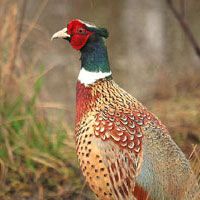 Shooting
syndicates are set up to ease the cost and in many woods can now be
found the rearing pens. You will come across them as you pre-beat woods
on fox hunts.
Shooting
syndicates are set up to ease the cost and in many woods can now be
found the rearing pens. You will come across them as you pre-beat woods
on fox hunts.
From incubation the chicks are kept in large sheds and as they get older they are placed in larger and larger pens until they are old and 'ripe' enough to be released from their holding pens into the countryside. Feed is kept permanently for them in hanging containers, i.e. old plastic drums to ensure the pheasants remain in the area where they are to be shot. Also, an aniseed solution is put around coverts, the smell from this appeals to the pheasants and they stay in the vicinity.
The shoots take place regularly and will be advertised in shooting magazines and locally. Most shoots take place just before Christmas.
A large shoot will generally take place with beaters and the shooters remaining stationary. Several beats will take place during the day. Smaller shoots may be of the walk-up fashion.
TACTICS
Action has to be taken early in an attempt to prevent birds from remaining in the area they are released into.
The feed containers can easily be located and you should act accordingly.
Pheasants have been known to follow a trail of the feed for some distance and remain if enough food is left. They will particularly follow an aniseed trail which can be sprayed from a garden spray. The aniseed fluid, bought from chemists, should be mixed with spirits such as white spirits. Grain soaked overnight in aniseed as a trail will also work.
BEATING
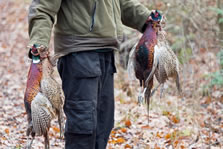 Much the same as grouse shoots, when their beaters and
shooters are in position, beat away towards their beaters.
Much the same as grouse shoots, when their beaters and
shooters are in position, beat away towards their beaters.
If there are enough of you, stand in front of their guns and prevent them from shooting.
On a walk-up shoot, position yourself ahead of the shooters and beat away at the same speed as the shooters walk, always watching to see if they change direction.

